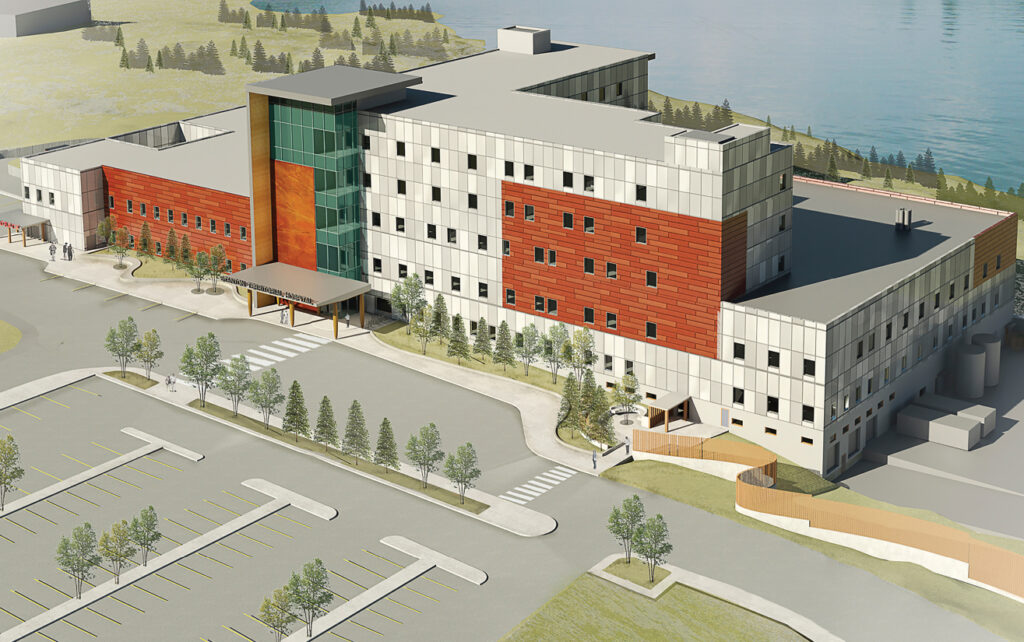New life for Stanton Territorial Hospital

By Bill Braden
From spartan beginnings in a cottage first aid station at the Con mine gold camp in 1937, Dr. Oliver Stanton created a lasting legacy of care across the Western Arctic. Now his namesake hospital about enters its third generation as a completely new, state-of-the-art, 280,000 square foot Stanton Territorial Hospital. Pegged at $350 million, it’s the biggest-yet public infrastructure project for the NWT, dwarfing previous projects like the Dehcho Bridge at $202 million and the Inuvik to Tuktoyaktuk Highway at $299 million. The new Stanton Territorial Hospital will be built to current hospital standards to provide single patient rooms throughout the facility (100 in total) to serve the people in the Northwest Territories and the Kitikmeot region of Nunavut.
The project will bring together at least seven seasoned companies in a multi-layered, public-private consortium (P3) called the Boreal Health Partnership: Carillion Canada Inc., Hochtief PPP Solutions, and Bird Capital will be the finance partners. Bird Construction, Clark Builders, and Kasian Architects are the design-build team, and Carillion Canada Inc. will maintain the hospital. Pat Cannon, of Carillion Canada Inc., is one of the lead coordinators for the project. He says the principle design-build tasks have been assigned to a joint venture of two familiar names in the North: Bird Construction and Clark Builders. “That’s a good combination,” says Cannon. “Bird has done a reasonable number of these (P3 projects) across Canada. And Clark is also a good builder, with the benefit of a local presence in Yellowknife with vice president Dave Brothers and superintendent Al Shortt.” “Bird-Clark have an obligation to ensure that Northern-based companies have an opportunity on the project. That will be done under their normal way of doing business,” says Cannon, adding that it’s early days yet to say how or when that will happen. The overall contract does not set out explicit targets for Northern suppliers or labour, Cannon says, but Bird-Clark will have to demonstrate they have gone to the local construction market. “They’ll get the opportunity, but they will have to demonstrate the capability and be competitive,” he says. The ground has already been cleared in preparation to begin leveling the site before pouring any concrete. After construction of the facility is completed and the hospital goes into service in 2018, the Government of the Northwest Territories will pay the consortium $18 million annually over 30 years to maintain and operate the building. The P3 approach is expected to save at least $150 million over the course of the contract compared to a traditional design and build project, says the GNWT. CN

